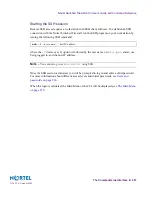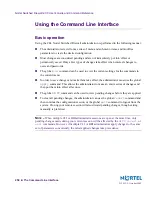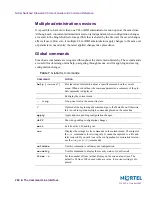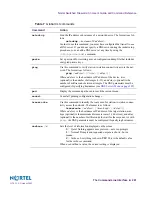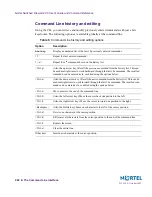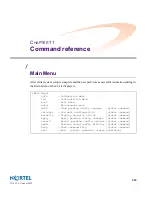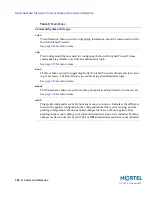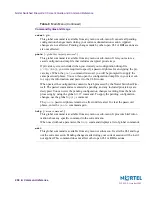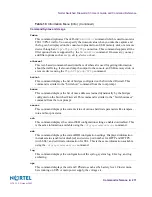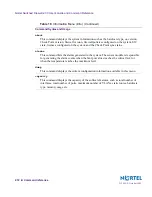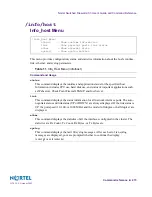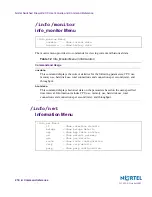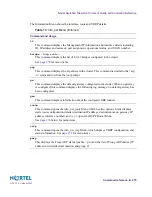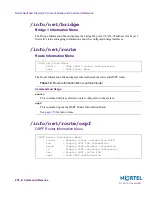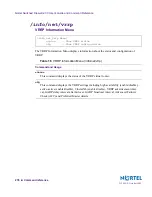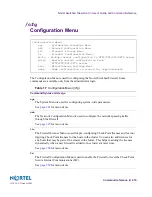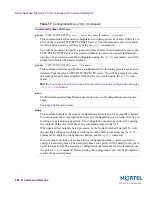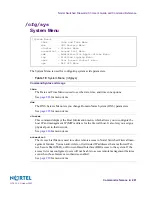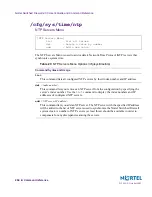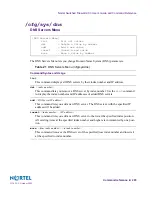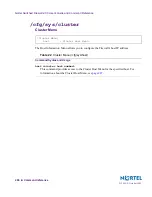
Nortel Switched Firewall 2.3.3 User’s Guide and Command Reference
Command reference
271
213455-L, October 2005
fwmon
This command replicates Check Point
fw
monitor
command which is used to monitor
FW-1/VPN-1 traffic. You can specify the timeout value when you take the capture and
the log can be displayed on the console or uploaded to an USB memory stick or a remote
device through an
ftp/sftp/scp/tftp
connection. This command supports all the
filter options that are supported by the
fw
monitor
command. If necessary, you may
add filter options such as
src ip, dst ip, device or host.
ethereal
This text-based (command-based) interface of ethereal is used for getting information
about the traffic log. It also can dump the output to the console, an USB memory stick, or
a remote device using the
ftp/sftp/scp/tftp
command.
brstat
This command displays the list of bridges configured on the Switched Firewall. This
command is similar to the “brctl show” command from the root prompt.
brmac
This command displays the list of mac addresses learned dynamically by the bridges
configured on the Switched Firewall. This command is similar to the “brctl showmacs”
command from the root prompt.
sensor
This command displays the current status of various hardware parameters like tempera-
ture and fan rpm status.
ssh
This command displays the current SSH configuration settings: enabled or disabled. This
is the same information available using the
/cfg/sys/adm/ssh/cur
command.
web
This command displays the current BBI configuration settings. Displayed information
includes status (enabled or disabled) and service port number for HTTP and HTTPS
(with SSL), and certificate information for SSL. This is the same information available
using the
/cfg/sys/adm/web/cur
command.
log
This command displays the configuration of the syslog, system log, ELA log, and log
archiving.
ups
This command displays the current UPS status such as the battery level, Cluster mem-
bers running on UPS or main power supply, the voltage etc.
Table 10
Information Menu (/info) (Continued)
Command Syntax and Usage

